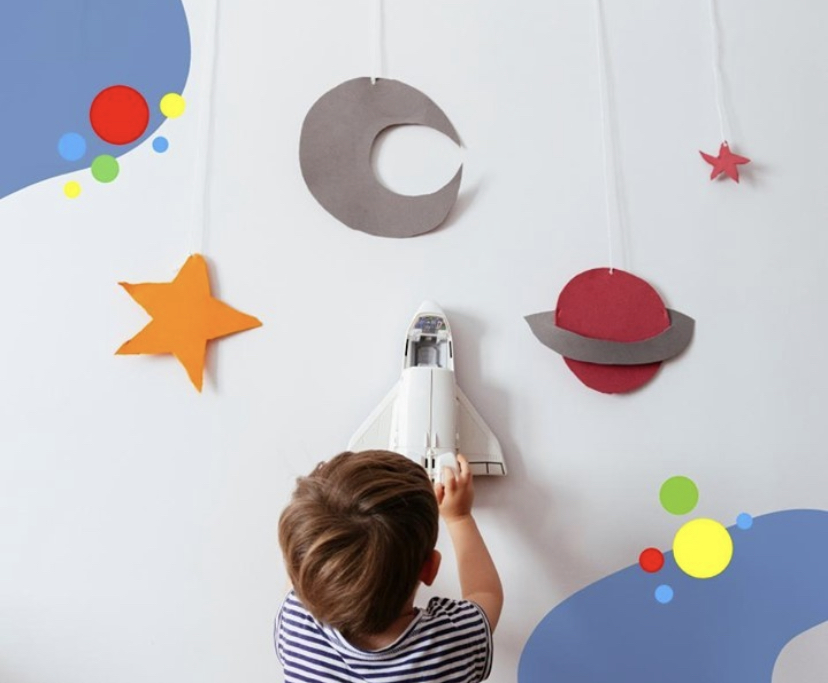The vestibular system is like the “compass” of our brain. It is a uniquely designed structure located in the middle ear that detects movement and understands where our head and body are in space. As a practitioner, I have been using this protocol for over a decade. More recently, the occupational therapists at Grace Children’s Therapy have completed their intensive training to benefit the children they see regularly. By using their new skills, the therapists will have another method to progress the kids closer to achieving their goals and addressing the underlying difficulties associated with functional problems in completing their activities of daily living. The team can now use the Astronaut Program to treat children with vestibular processing difficulties, impacting their ability to perform functional tasks. This protocol is used within our therapy sessions in alignment with the goals, therapy plans and outcomes from occupational therapy assessments. Our service can provide parents with education and guidance in the protocol for home-based implementation to increase the frequency to improve results. Importantly, providing parents with the tools to follow through at home is also vital in gaining positive effects by supporting parents with explicit instruction, demonstration and monitoring progress.
It’s necessary to highlight that the protocol may not suit everyone, and the occupational therapist needs to determine if other medical conditions may impact its effectiveness. With this in mind, the protocol can then partly address specific areas of concern associated with auditory and visual processing abilities. This is where collaboration within the team is beneficial and can draw on the combined knowledge of our Grace Children’s Therapy team. The team’s uniqueness is in the combined years of occupational therapy experience and the combined knowledge we bring as a united team, which benefits all the families that attend our services. As with everything we do, it’s in the culture of teamwork and knowledge sharing that we can bring another service to the community.
Over the years, I’ve seen children present with various signs indicating some dysfunction within their vestibular system, and two children are never the same. Looking at the child through an occupational therapy lens and treating the body’s systems in an integrated approach can be the key to unlocking a child’s potential while ensuring a functional goal-focused approach is taken. Having a practical and functional goal attached to any process or method is crucial in developing a child’s capacity to progress along the continuum of independence and confidence. Success in the small gains made can lead to increased self-esteem, participation and willingness to engage, social engagement and independence in completing tasks. All of which are important.
Children with vestibular processing difficulties have poor motor coordination skills, maybe fearful of movement, awkward, clumsy, fall and bump into things. These children may have poor balance. They may appear to be “squirmy”, “fidgety”, or described as the child who “doesn’t stop moving” or appears disinterested. Children with vestibular processing dysfunction may appear to be “lost in space” or tuned out.Vestibular deficits are often found in children with delayed motor development, perceptual or attention deficits, learning disabilities, emotional problems, language disorders and autism.
Our vestibular system helps us understand the position of our head and body in relation to gravity. It tells us which way is up and where we are moving to. It helps us balance, spatial orientation, and maintain a stable visual image, even when moving. Without our eyes working correctly in conjunction with our vestibular system, visual information is misinterpreted. This can make everyday tasks we take for granted challenging such as; reading, writing, throwing and catching a ball. Generally participation in many activities that are so vital to proper childhood development are often avoided or may become the cause of anxiety or stress due to it challenging nature for the child.
In combination with our therapy approaches, the Astronaut Program treats vestibular dysfunction in children by combining movement, sight and sound activities that are fun and appealing to children. We incorporate principles into therapy to improve coordination & movement, attention, concentration, balance and focus. With clear information and signals coming from the vestibular system, sights and sounds in the environment start to make sense. The once-only isolated pieces of information are less disconnected from each other, and function is improved. Of course, having this new training and resource is not the answer to all things. Still, it provides an additional tool to our therapy toolbox to incorporate into our practice and provides our occupational therapy team with added knowledge & practical strategies.

